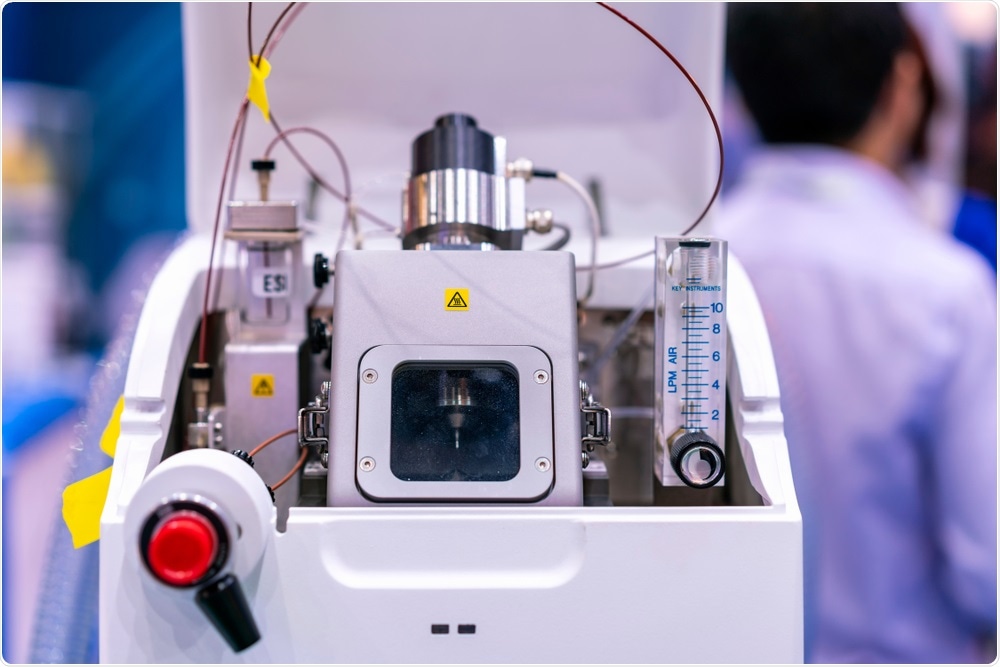A study conducted by researchers in the United States has demonstrated that a new real-time mass spectrometry protocol for forensic drug screening could serve as a greener and more convenient tool than one that is currently used.

Image Credit: Surasak_Photo/Shutterstock.com
The team says that using nitrogen as the discharge gas in direct analysis in real mass spectrometry (DART-MS) applications would be just as suitable as helium is, but would provide a more environmentally friendly, cheaper and more accessible alternative.
The current challenges
Forensic drug analysis that produces evidence that will stand up in law courts can be a complex and time-consuming process that involves screening and confirmation stages.
Techniques that have been used for the confirmation phase are gas chromatography-mass spectrometry (GC-MS) and liquid chromatography-mass spectrometry (LC-MS). Both methods are highly specific and sensitive, but the sample preparation and chromatographic separation is time-consuming.
Over the last ten years, a backlog of forensic drug cases has increasingly become a problem in the United States for crime investigators and law enforcers, meaning high-throughput techniques are urgently needed that will increase the efficiency of existing methods.
DART-MS provides rapid analysis of gases, liquids, and solids, whilst requiring only minimal sample preparation and no chromatographic separation.
Since the technique was introduced in 2005 it has become an established forensic drug analysis method and since 2009, coupling with time-of-flight mass spectrometry DART-TOFMS has been validated and widely supported by people in the field of high-resolution mass spectrometry.
DART-TOFMS is a comparatively cheap technique that can reduce triaging times in forensic drug cases, helping, therefore, to reduce the backlog and speed up the prosecution of criminals.
Considering nitrogen instead of helium
Until now, helium has generally been the discharge gas used for DART-MS, but nitrogen could provide a more eco-friendly, cost-effective and easier to access option.
The researchers point out that this is particularly important if the global helium shortage is taken into account, as well as the need for on-the-spot drug MS screening required at crime scenes.
The people who developed DART did originally propose nitrogen as a potential alternative to helium, but it has rarely been used and there is a lack of published data to support its use in DART forensic analysis.
Recently, Liguo Song (Department of Chemistry, Western Illinois University) and colleagues showed that N2 DART provides effective ionization of polar organic compounds, apart from in the case of a few very small ones such as methanol.
“Therefore, N2 DART-TOFMS, similar to He DART-TOFMS, should be a suitable technique for rapid screening of forensic drugs,” says the team.
What the team has now found
As recently reported in the journal Rapid Communications in Mass Spectrometry, Song and colleagues have now verified their hypothesis in an analysis of ten common drugs of abuse, eight synthetic cannabinoids, and four controlled prescription drugs.
According to the annual National Drug Threat Assessment by the Drug Enforcement Administration (DEA) published in 2018 6, controlled prescription drugs (CPDs) continue to be responsible for the most drug-involved overdose deaths and are the second most commonly abused substance, though marijuana is the most commonly used illicit drug,”
N2 DART-TOFMS was performed using a three-minute protocol applied to each sample. Samples in the form of powders, tablets, and solutions were subjected to a nitrogen gas stream located between the DART and TOFMS instruments.
The limit of detection (LOD [smallest amount of analyte that can be reliably detected]) was found to be about 10 µg/mL or 10 pg.
“A cheaper, greener and more convenient alternative”
All of the drugs were positively identified at the LOD, leading the authors to conclude that the three-minute protocol could be used for the analysis of seized drugs whether they are in the forms of tablets, powders or solutions.
In consideration, that N2 is readily available in the air and He is a non-renewable resource, N2 DART-TOFMS is a cheaper, greener and more convenient alternative to He DART-TOFMS in rapid screening of forensic drugs,”
Journal references:
Song, L. Nitrogen direct analysis in real-time time-of-flight mass spectrometry (N2 DART TOFMS) for the rapid screening of forensic drugs. Rapid Communications in Mass Spectrometry 2019. https://doi.org/10.1002/rcm.8558
Thompson M and Ramsey M. Environmental and Agricultural Applications of Atomic Spectroscopy. Encyclopedia of Spectroscopy and Spectrometry (Second Edition) 1999, Pages 494-501 https://doi.org/10.1016/B978-0-12-374413-5.00135-4